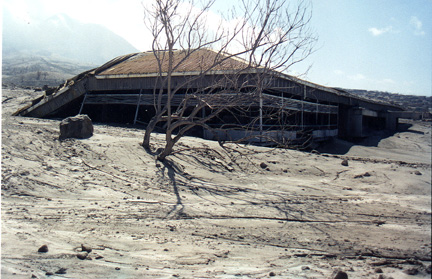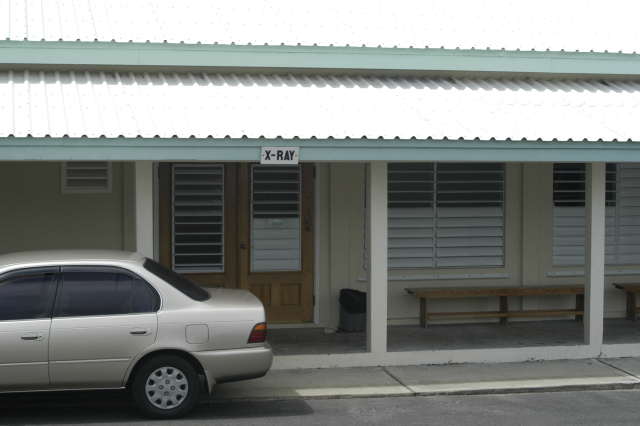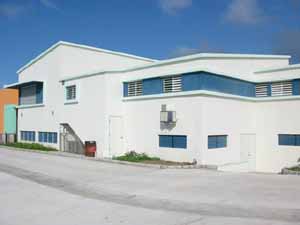- Glendon Hospital, Plymouth. Photograph taken in 1998
- Temporary Hospital set up in St. Johns Still in use in 2004
Status of Health Care During Volcanic Crisis
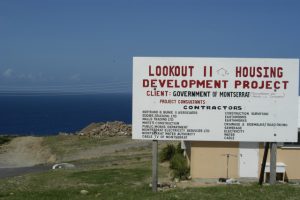
Entrance to the government developed Lookout community where the Red Cross Center was located during the volcanic crisis
Two of the greatest losses during the eruptions were the medical school and the new hospital, both located in Plymouth. Glendon Hospital was a sixty-eight bed hospital built just after
Hurricane Hugo (1989). During early evacuations, Glendon Hospital was evacuated three times until it was permanently moved to the north of the island. The new location in the north was in St. John’s primary school. During the eruption, the permanent Secretary of Health indicated that this was not only a stressful time for the hospital but that the staff and patients felt the burden of this constant uncertainty. In the final evacuation, much of the hospital’s equipment was lost. Beyond lacking in supplies, the new hospital was inadequate in patient care as most patients had to walk outdoors to use the bathrooms and only minimal care was available due to the exodus of nurses and medical staff.medical staff.
hospital
According to the principle nursing officer, over 50% of the nursing staff left the island. During the eruption, the Montserrat Red Cross also provided services to the population, young and old. While the main Red Cross station was destroyed in the eruptions of 1995 and 1997, a new center was quickly created in Lookout. The emergency center doubled as both a Red Cross Unit as well as a community center.
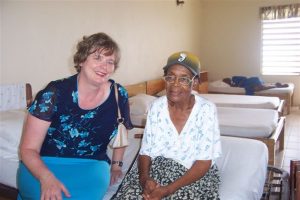
British Governor of Montserrat during her visit at the Golden Years Home
The Disproportionate Effect on the Elderly
The inadequate health care combined with a loss of housing and displacement during the eruption such that many of the elderly suffered disproportionately to other groups. In a culture that greatly values privacy and personal resilience, those with common ailments lost much of their personal pride as their medical problems became more public (Pattullo 96). This was compounded by the loss of medical service employees during the large off-island migration. More than 50% of the nursing staff was lost as well a general surgeon and other qualified medical professionals.
By September 1997, there were approximately 250 elderly people requiring medical services and some level of institutional care. Because of family and community structure prior to the volcanic period there was no need for such institution care before and many on the island were very skeptical of this practice. However, because the community structure disintegrated in the volcanic crisis, these institutional homes were now necessary.
In order to set up such home the British Red Cross was of great assistance, creating locations such as the “Golden Years Home” which cared for and housed many elderly community members. Overall, while there were very few deaths associated with the volcano the way in which health care was provided for the elderly on the island changed greatly with the eruption.
Current State of Health Care
The St. John’s location, as of 2001, was able to offer 30 beds for secondary care. This location as well as four other clinics on the island provide most of the health care on the island. While in some ways these services are adequate major health problems require residents to go off-island for care. The personal story below expresses this need to look else where for health care. In many ways, this need for health care and security was one of the reasons some of the elderly left the island. While most elderly did stay on the island post eruption, the ways in which health care has been handled on the island has greatly effected this populations way of life. In September 2003, the Red Cross opened a newly developed center in Brades to provide easier access to the greater population.
- Ambulance used by the St. John’s Glendon Hospital
- Exterior view of the St. John’s Glendon Hospital
Useful Links
PanAmerican Health Organization
Return to Aging in Montserrat page
